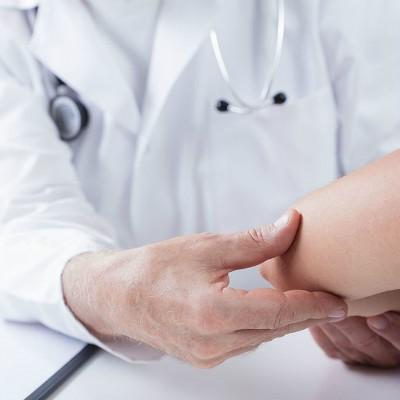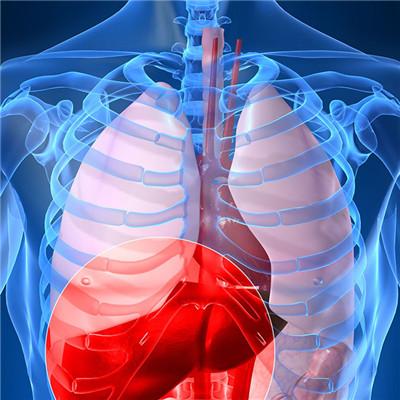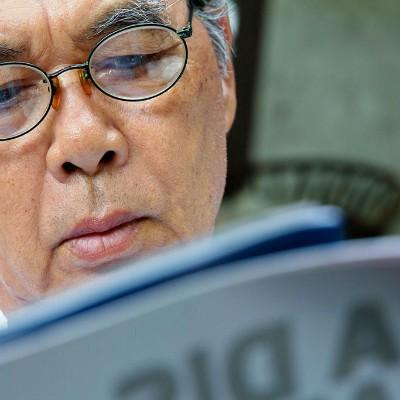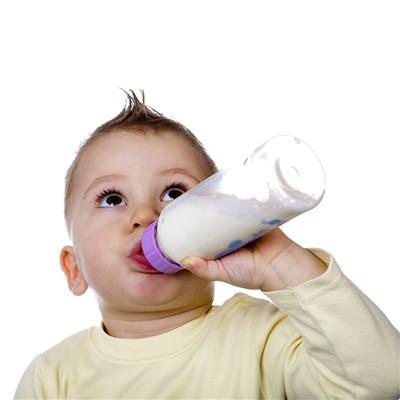How should old age obesity do?
summary
Is there any treatment method for obesity in the elderly? Western medicine and traditional Chinese medicine are commonly used in the treatment of obesity in the elderly. What medicine should old people obesity take.
How should old age obesity do?
The treatment of obesity should first control diet. It should be popularized step by step. In addition to the guidance group composed of physicians, psychologists, nutritionists and nurses, family cooperation should also be obtained to guide patients to make plans, change eating behaviors, and regularly check the effect of implementing the plans. Besides planning what to eat and how much to eat, we should also pay attention to the way and environment of eating, such as increasing the number of chewing, slowing down the speed of eating, avoiding watching TV or listening to the radio while eating, and overcoming the impulse when eating during fatigue, boredom and depression. Exercise is also one of the important measures for obese patients. Long term moderate exercise can increase the activity of fat cell enzymes, accelerate fat decomposition, and has a good weight loss effect. At the same time, it can increase the number of insulin receptors, improve insulin sensitivity, and improve insulin resistance. It is helpful to reduce blood glucose and correct lipid metabolism disorder in obese patients with type 2 diabetes or hyperlipidemia, Prevent or delay the occurrence and development of complications. Exercise therapy is suitable for all patients with simple senile obesity. The form of exercise varies from person to person, and there are great individual differences. It must be selected according to the patient's age, physique, personal life or sports habits, social, economic and cultural background. Low intensity exercises such as brisk walking, Taijiquan, gymnastics, stair climbing, cycling and minor housework are suitable for elderly patients with poor physique. Jogging, wiping the floor, mountaineering, various ball games and heavy physical labor and other moderate intensity sports are suitable for younger patients with better physique. The amount of exercise is the core of the exercise program. The amount of exercise depends on the intensity and time of exercise. In the process of formulating and implementing the exercise plan, we must follow the principle of individualized difference, obesity degree, from light to heavy step by step. We should start from low intensity exercise (maximum oxygen consumption 40%) for 5-10 minutes. When patients feel good and can continue to adapt to exercise, they can gradually enter moderate intensity exercise (maximum oxygen consumption 50% - 60%) for 20-30 minutes, once a day for a long time. People with body mass index (BMI) 30 or moderate or severe obesity can take moderate or even high-intensity exercise (maximum oxygen consumption 60% - 80%) and exercise at least 900 kcal per week, which has the best weight loss effect. In the whole exercise process and after exercise, we should pay attention to the patient's self feeling. In case of severe breathing difficulty or chest pressure, dizziness, dizziness, sweating, dizziness, etc Those who are pale or can't tolerate exercise should stop exercise immediately. For the educated or well-trained obese patients, we should carry out the necessary sports knowledge education to help the patients learn to count the pulse rate (heart rate) before and during the exercise, especially record the resting pulse rate (heart rate under the stable state before getting up in the morning), and the fastest pulse rate during the exercise. For example, the maximum oxygen consumption of moderate intensity exercise is 50%, which can be calculated according to the following formula: 0.5 (maximum pulse rate - resting pulse rate) resting pulse rate = pulse rate of moderate intensity. When the maximum heart rate during exercise is unknown, it can also be calculated according to 220 - patient age = maximum pulse rate during exercise. Of course, this rough calculation method is not as accurate as the direct measurement of the actual maximum heart rate during exercise. Therefore, the maximum pulse rate should be obtained from the patient's exercise as far as possible.
In simple obesity patients with insulin resistance or impaired glucose tolerance, long-term diet and exercise therapy can effectively control the weight of patients, reduce insulin resistance, improve or partially reverse the abnormal glucose tolerance. In general, it is not advocated to use weight-loss drugs, and the so-called "ancestral secret recipe" or even mixed preparations of Chinese and Western medicine are widely publicized in the society. The ingredients are complex, not through strict experimental research and scientific argumentation, but innovative put on the market, its curative effect is short or invalid, and even many serious toxic and side effects. Therefore, for obese patients who can not achieve satisfactory control through reasonable diet and exercise therapy, drug adjuvant therapy can be considered. Drug therapy can only be used as an auxiliary means of diet control and exercise in the treatment of obesity; ② There were impaired glucose tolerance, dyslipidemia and hypertension; ③ There were severe osteoarthritis, obstructive sleep apnea and other complications. Commonly used weight loss drugs: the first category: central nervous function weight loss drugs. Among these drugs, there are: catecholamines (amphetamines): they mainly promote the release of norepinephrine and dopamine in the central nervous system, excite the central sympathetic nervous system, block the reuptake of norepinephrine by nerve endings, inhibit the feeding center and reduce appetite. The side effects of this kind of medicine include: irritability, insomnia, dizziness, euphoria, increased heart rate, elevated blood pressure, headache, sweating, nausea, vomiting, diarrhea, etc. Influence 5-hydroxytryptamine drugs (fenfluramine): promote the release of 5-hydroxytryptamine, inhibit the reuptake of 5-hydroxytryptamine by nerve endings, enhance the utilization of dietary center, and increase the sensitivity of peripheral tissues to insulin. Side effects are: dry mouth, fatigue, depression, gastrointestinal reactions. Recently, there have been reports of drug-related primary pulmonary hypertension and cardiac valve hypertrophy, which have been withdrawn from European and American markets. At the same time, it affects catecholamine and serotonin drugs (sibutramine): inhibit norepinephrine and serotonin reuptake, promote the utilization of glucose in muscle and adipose tissue, reduce blood glucose and blood lipid. Side effects are: excitement, insomnia, sweating, constipation, nausea and so on. It is a kind of metabolizing drug, which can increase the heat production and lipolysis of adipose tissue, improve the metabolic rate, increase the heat output and reduce the body weight. Other central appetite inhibitors: leptin kptin, leptin receptor agonist, satietin, neuropeptide Ya receptor antagonist and other new weight-loss drugs are under research and development. The second category: non central nervous function weight loss drugs: gastrointestinal lipase inhibitors: reduce fat intake. Glucosidase inhibitors: reduce carbohydrate intake and absorption. Drugs for gastrointestinal system (metformin): may be effective in weight control in patients with type 2 diabetes and polycystic ovary syndrome. It can also be used to treat obesity alone. These drugs are not only commonly used in the treatment of diabetes, because it can reduce insulin resistance, increase insulin sensitivity, reduce intestinal glucose absorption, so it is especially suitable for obese patients with insulin resistance or IGT. Gastrointestinal motility regulating drugs: Rhubarb preparation, Monascus extract (Zhibituo, Monascus). Adenosine receptor antagonists: ephedrine, caffeine and tea can stimulate fat oxidation and increase energy consumption. β 3-adrenergic receptor agonists: increase lipolysis of white adipose tissue and thermogenesis of brown adipose tissue, reduce fat accumulation. So it has a good weight loss effect( 4) Surgical weight loss: at present, it is considered that the more mature surgical methods are: gastroplasty, gastric bypass, pancreaticobiliary bypass, intragastric balloon placement, etc. its main weight loss principle is to limit food intake through surgery, induce "dumping syndrome", selectively affect the digestion and absorption of nutrients, which is mainly suitable for intractable severe systemic obesity. For patients with local fat accumulation and local skin fat relaxation, liposuction or skin fat resection can be performed respectively, but the operation indications must be strictly controlled. Surgery can lose more weight, but it is very complex, requires a large number of professionals, rebound is also more common, therefore, surgical weight loss is generally limited to a small number of severely obese patients. 2. The optimal treatment for obesity always starts with lifestyle changes, including diet changes by reducing calorie intake and fat content and increasing exercise. Weight loss drugs are used only if these non drug therapies fail. At present, the drugs used to treat obesity are limited or unsatisfactory, because they are likely to be abused and side effects have been reported. Amphetamine has a strong euphoric effect and may be abused. Other appetite inhibitors acting on the central nervous system, such as phentermine, which acts through catecholaminergic pathway and has stimulatory and sympathomimetic effects, and dexfenfluramine, which acts mainly through the release of 5-hydroxytryptamine, They all withdrew from European and American markets because of their sedative effects and may be related to pulmonary hypertension and heart valve damage.
At present, there are more reports in domestic and foreign magazines about the two drugs with positive effect in the treatment of obesity: ① sibutramine (trade name) nometine: a new type of serotonin and norepinephrine reuptake inhibitor. It is suitable for the treatment of obesity in combination with low calorie diet, including weight loss and maintaining weight loss. Weight loss is achieved by increasing satiety after digestion to reduce food intake. It has been reported that sibutramine can reduce body weight, cholesterol, triglyceride and low density lipoprotein; High density lipoprotein increased; Lower blood pressure and improve microcirculation; Improve insulin resistance, reduce blood sugar. The recommended starting dose is 10mg, once a day, either after a meal or on an empty stomach. For the patients who are not satisfied with weight loss after 4 weeks of treatment, the dosage can be increased to 15 mg, once a day. In the process of dose adjustment, blood pressure and heart rate must be monitored. Side effects include dry mouth, insomnia, headache and constipation. ② Orlistat (trade name seneco): belongs to the non central nervous function of weight loss drugs. It is a potent gastrointestinal lipase inhibitor, selectively inhibiting gastrointestinal lipase and pancreatic lipase. Orlistat (zenico) is a semi synthetic lipostatin derivative. These enzymes play an important role in the process of dietary fat digestion. Orlistat (zenico) may inhibit the action and activity of these enzymes, but has little or no effect on the activities of amylase, trypsin, chymotrypsin and phospholipase, Orlistat (zenico) mainly plays a role in the gastrointestinal tract by covalent binding with serine residues in the active sites of lipase and pancreatic lipase. When eating fatty food, orlistat (zenico) can partially inhibit the absorption of triglycerides and free fatty acids. It is safe, effective, reliable and has no adverse reaction because it acts on the gastrointestinal tract rather than the whole body. Take it with the meal or within 1 hour after the meal.
matters needing attention
A 12-year follow-up study found that the mortality of overweight and obese patients aged 60 increased by 20%, and the cardiovascular mortality accounted for 50% - 60% in China. Spleen deficiency and dampness resistance type: Fangji Huangchang Decoction and Zexie decoction. Stomach heat dampness resistance type: Fangfeng Tongsheng powder, Xiaochengqi decoction. Liver qi stagnation type: Dachaihu decoction, Dachengqi decoction. Spleen and kidney deficiency type: Wuwei Yigong powder, Shenling Baizhu powder.









